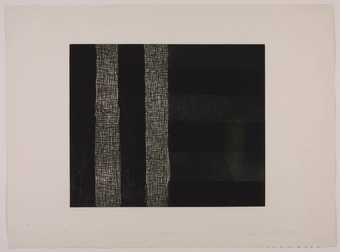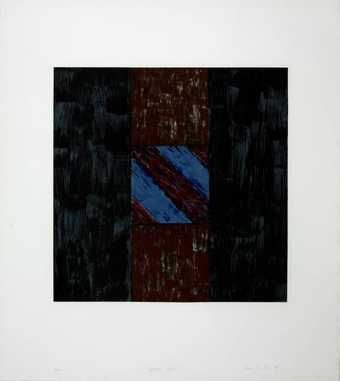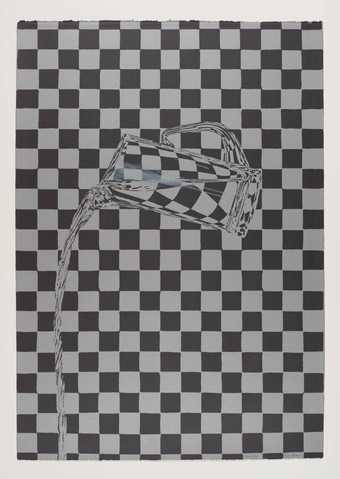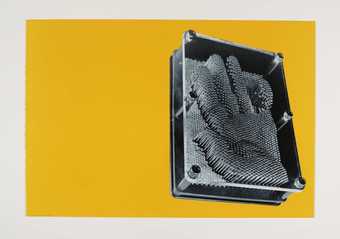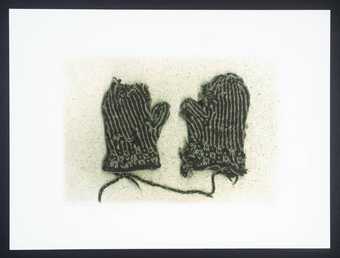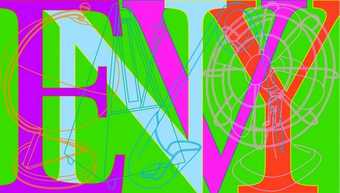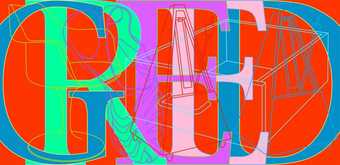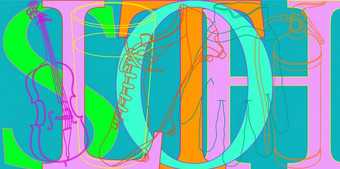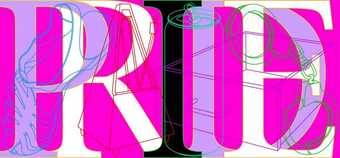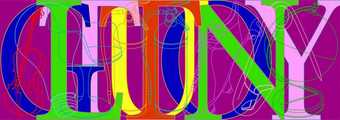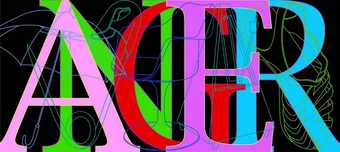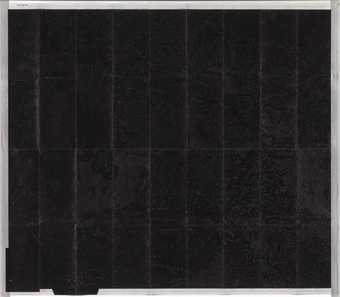
Not on display
- Artist
- Kathy Prendergast born 1958
- Medium
- Digital print on paper
- Dimensions
- Support: 855 × 1800 mm
- Collection
- Tate
- Acquisition
- Purchased 2000
- Reference
- P78411
Summary
Lost is a computer generated inkjet print published in an edition of twenty-five of which Tate’s copy is number nineteen. The Irish artist Kathy Prendergast based the print on a map of America and the colours were enhanced by computer manipulation. On first inspection Lost resembles a standard map of the United States. It employs the familiar signs and symbols of map-making to represent the country, the land-mass being criss-crossed by red interstate highways, blue rivers and grey lines indicating state boundaries. However, on closer inspection it becomes apparent that the map is strangely empty, Prendergast having removed the vast majority of place names. Familiar reference points such as New York, Chicago or Los Angeles are missing because the artist only retained place names containing the word ‘lost’. The work is thus scattered with an array of paradoxical names such as ‘Lost Spring’, ‘Lost Creek’, ‘Lost Trail’, ‘Lost Hills’, ‘Lost Cabin’, ‘Lost Valley’ or ‘Lost Man Hollow’. The names describe real but unfamiliar places and the viewer is presented with an alternative map of the United States that invites imaginative participation.
In Lost Prendergast takes a familiar everyday object and subtly transforms it, subverting its normal function. Traditionally a map is thought to contain factual, as opposed to subjective, information about the location described. According to the critic John Hutchinson, a map ‘contains within it a desire for order and control.’ (Hutchinson, p.2.) Maps present the world as recognizable and hence knowable. They are tools enabling people to locate themselves in relation to the terrain described. However, Prendergast’s map makes the familiar strange and gently mocks such a desire for security, order and control. Stripped of all reference points other than those which are ‘lost’, the map is an unusable parody of its traditional function. Instead of assisting navigation, the work evokes the fear of getting lost in unfamiliar territory. It might also refer to lost cultures, such as indigenous cultures that have been wiped of the map of America.
Prendergast has worked with maps since the early 1990s and Lost invites comparison with works such as the City Drawings (The Irish Museum of Modern Art), an ongoing series of drawings begun in 1992 and exhibited at the Tate Gallery in 1997 in the Art Now room. Prendergast employs the conventions of map-making against the grain, the drawings exploring mapping as an imaginative rather than a classificatory system. Each image presents a carefully drawn graphite map of a major world city. Yet the cities are unrecognizable and the intricate, fragile images evoke imaginary maps of the brain rather than familiar locations.
Prendergast is also a sculptor and, as in Lost or the City Drawings, her three-dimensional works explore the imaginative, poetic resonances of everyday objects. She uses familiar, domestic items such as chairs, tables, pillows and blankets which she then manipulates, altering their scale or adding other materials such as hair or stone. For example in The End and the Beginning 1 1997 (Trish Bransten and Dennis Gallagher) the artist added blond hair to a baby’s bonnet and in Grave Blanket (Version 1) 1997 (Kerlin Gallery) she pushed small, marble chips, associated with contemporary graves and cemeteries, through the holes in a child’s blanket. In both cases Prendergast links objects associated with childhood and new life to others evocative of ageing and death. As a result the blanket or bonnet, suggestive of domestic innocence becomes disturbing and, as in Lost, repressed fears and anxieties are brought to the surface.
Further Reading
Kathy Prendergast: The End and The Beginning, exhibition catalogue, The Irish Museum of Modern Art, Dublin 1999, reproduced (colour) pp. 28-33
Kathy Prendergast: City Drawings, exhibition brochure, Tate Gallery, London 1997
John Hutchinson, Kathy Prendergast, exhibition brochure, Camden Arts Centre, London 1991
Imogen Cornwall-Jones
March 2002
Does this text contain inaccurate information or language that you feel we should improve or change? We would like to hear from you.
Display caption
Prendergast omits all place names from this map of North America, except for those which include the word 'lost'. She parodies conventional ideas about maps and their use as a means of orientation. By removing familiar names she transforms the physical terrain into a zone of the imagination.
Gallery label, November 2000
Does this text contain inaccurate information or language that you feel we should improve or change? We would like to hear from you.
Explore
- abstraction(8,615)
-
- from recognisable sources(3,634)
-
- man-made(999)
- emotions and human qualities(5,345)
- humour(1,441)
- illogicality(17)
- scientific and measuring(791)
-
- map(110)
- countries and continents(17,390)
-
- USA(622)
You might like
-
Sean Scully Union
1984 -
Sean Scully Square Light 2
1988 -
Tim Mara Glass Jug
1983 -
Tim Mara Pin Sculpture
1995–6 -
Sean Scully #4
1992 -
Sean Scully Yellow Light
1992 -
Sean Scully [no title]
1996 -
Kathy Prendergast Mittens and Moth Eggs
2000 -
Sir Michael Craig-Martin Envy
2008 -
Sir Michael Craig-Martin Greed
2008 -
Sir Michael Craig-Martin Sloth
2008 -
Sir Michael Craig-Martin Pride
2008 -
Sir Michael Craig-Martin Gluttony
2008 -
Sir Michael Craig-Martin Anger
2008 -
Kathy Prendergast BLACK MAP SERIES (America North Central)
2009

